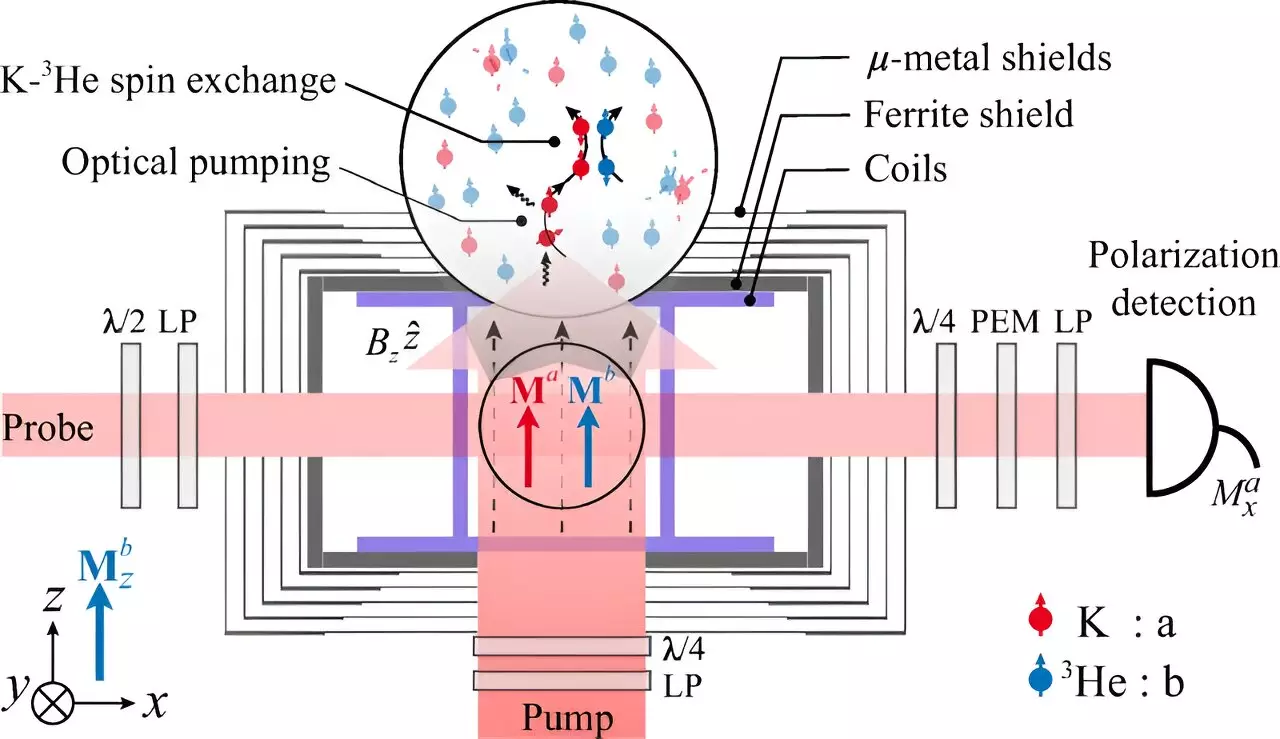Recent developments in the realm of quantum physics have spotlighted a significant breakthrough in the suppression of magnetic noise, a key factor that has historically hampered precision measurements. A research team from the University of Science and Technology of China has identified a Fano resonance interference effect, which plays a pivotal role in curbing magnetic noise interference by an impressive factor of at least 100. This advancement, documented in the esteemed journal Physical Review Letters, underscores both the intricacies of spin interactions and the technological challenges faced by scientists engaged in frontier physics experiments.
Over the past several decades, the scientific community has exhibited a burgeoning interest in exotic spin interactions that extend beyond the conventional frameworks of particle physics. These interactions have emerged as crucial components not only in the quest for dark matter but also in the exploration of novel forces in nature. Typically, these exotic phenomena can be modeled as external magnetic fields that act upon atomic spins. However, the exceedingly delicate nature of these interactions poses formidable challenges, particularly concerning the myriad of noise sources that can obscure subtle signals.
In many experimental settings, distinguishing genuine spin interactions from the overwhelming backdrop of magnetic noise has been exceedingly complex. Therefore, advancements in detection methods that enhance the ability to measure weak magnetic signals are paramount for the progression of both theoretical and experimental physics.
Traditionally, atomic comagnetometers have been employed to mitigate the effects of magnetic field fluctuations in precision measurements. By leveraging two distinct atomic spins, researchers could reduce the consequences of magnetic drift. However, these systems have mostly catered to low-frequency noise, under 1 Hz, leaving a substantial gap for higher frequency noise interference that can significantly distort results. The clear need for a robust solution to suppress both low and high-frequency magnetic noise has catalyzed recent innovations in this field.
The research team has introduced a novel self-compensation method, experimentally validated in systems comprising potassium and helium-3 gases. In this setup, potassium atoms are polarized via laser illumination, which then facilitates a process of spin-exchange collisions with helium nuclei. This creative approach allows for effective manipulation of magnetic noise at higher frequencies, overcoming many of the obstacles faced by earlier methodologies.
Using this innovative self-compensation technique, researchers explored the dynamics of magnetic fields and their influence on atomic spins. The experimental protocol demonstrated that by precisely adjusting the angle of detection relative to the noise frequencies, marked suppression of magnetic noise could be achieved. This insight offered a fresh theoretical framework grounded in the principles of Fabry-Perot resonance interference, providing a comprehensive understanding of the underlying mechanisms at play.
Moreover, the experiments yielded remarkable results, showcasing suppression of magnetic noise from the near direct current realm up to frequencies of 200 Hz, achieving an extraordinary reduction exceeding two orders of magnitude. It is worth noting that if magnetic detection limits are constrained, this self-compensation technique holds promise for enhancing sensitivity to pseudomagnetic fields, potentially achieving an unprecedented sensitivity level of 0.1 femtotesla per square root Hertz (fT/Hz1/2).
The implications of these findings extend far beyond immediate technological advancements. The capabilities of this new magnetic noise suppression technique are set to revolutionize the search for dark matter and facilitate investigations into exotic spin interactions. As researchers delve deeper into the untapped realms of fundamental physics, this approach heralds a new era of precision measurement, allowing scientists to probe elementary phenomena with unmatched sensitivity and accuracy.
The innovations pioneered by the team led by Professors Peng Xinhua and Jiang Min reflect a significant advancement in experimental physics. As new frontier fields continue to emerge, the methodologies they have developed present opportunities to address some of the most profound questions surrounding the nature of our universe. With the reduction of magnetic noise interference, we stand on the precipice of new discoveries in the intricate world of quantum interactions and cosmic phenomena.


Leave a Reply